Superfact 13: The Strange Worlds of Exoplanets
Our sun is a star, and it has 8 planets Mercury, Venus, Earth, Mars, Jupiter, Saturn, Uranus, and Neptune (as well as comets, asteroids, dwarf planets, etc.). The stars you see when you look up in the sky also have planets. We have identified 5,765 exoplanets (as of July 24th, 2024) but there are billions more in our galaxy. Some exoplanets are similar to Earth, and some are very different from any of the planets in our solar system.
Exoplanets
We know that exoplanets exist, we know some of them are in the so-called habitable zone and that some of them are very strange and interesting. This is certainly important knowledge for how we view our world and the Universe and yet many people who have not paid attention to astronomy news are very surprised to hear this information.
I’ve met many people who aren’t sure about the difference between a planet and a star, so being confronted with the news about exoplanets can be dizzying. That is why I am referring to the Strange Worlds of Exo Planets as a super-fact.
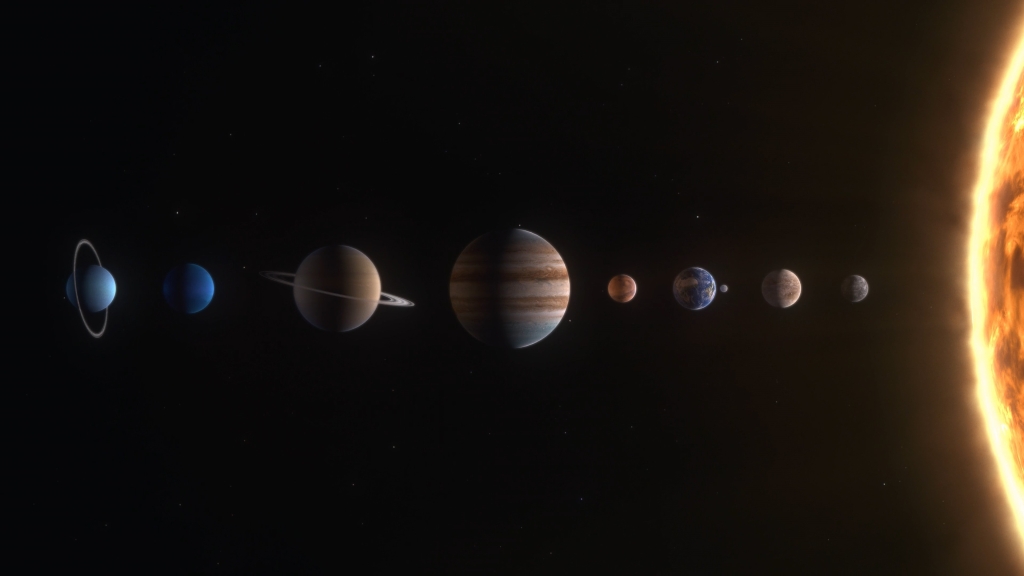
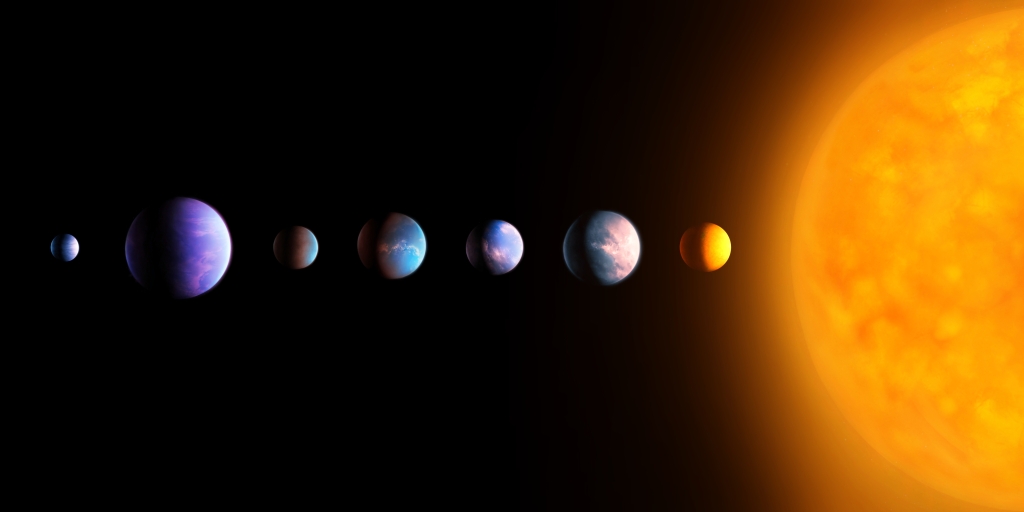
Most known exoplanets orbit stars roughly similar to the Sun but a lot of exoplanets have been seen orbiting red dwarf stars. It is estimated that there are 11 billion potentially habitable Earth-sized planets in the Milky Way. 40 billion if planets orbiting the numerous red dwarfs are included.
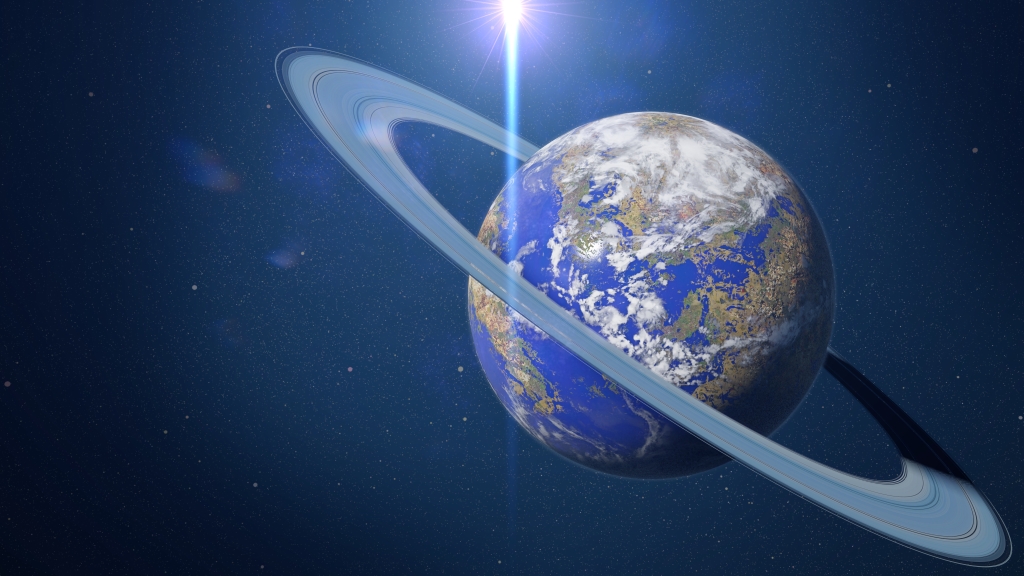
Habitable Zones
About 1 in 5 Sun-like stars have an “Earth-sized planet in the habitable zone. The definition of “habitable zone” is the distance from a star at which liquid water could exist on orbiting planets’ surfaces. Habitable zones<<Link-2>> are also known as Goldilocks’ zones, where conditions might be just right – neither too hot nor too cold – for life. The habitable zone for our solar system goes from the orbit of Venus to orbit of Mars with Earth in the middle.
It may seem strange that Venus is borderline in the habitable zone considering it’s hellish 870 degrees Fahrenheit. However, being in the habitable zone is no guarantee that the planet is habitable, and Venus got unlucky with its greenhouse gases (beginning about 2 billion years ago). Below you can watch a NASA video explaining about habitable zones.
Planets are extremely faint compared to their parent stars. For example, a Sun-like star is about billion times brighter than the reflected light from any exoplanet orbiting it. It is difficult to detect such a faint light source, and furthermore, the parent star causes a glare that tends to wash it out.
Just think about why you don’t see many stars during the day. They are still there and why you can’t see them is not because the sky is blue, but because the sun’s powerful light washes them out. Therefore, it is necessary to block the light from the parent star to reduce the glare while leaving the light from the planet detectable; doing so is a major technical challenge. All exoplanets that have been directly imaged are both large (more massive than Jupiter) and widely separated from their parent stars.
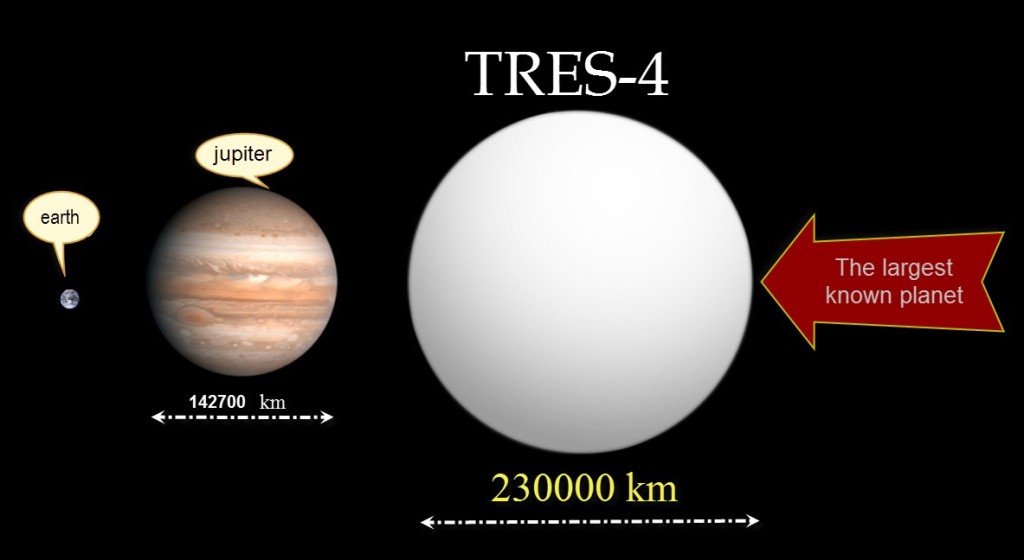
The vast majority have been detected through indirect methods, such as the transit method. It should be noted that the official definition of the term planet used by the International Astronomical Union (IAU) (since they booted Pluto) only covers our Solar System and thus does not apply to exoplanets. My opinion : we may need another update on the definition of what a planet is as we continue making exoplanet discoveries.
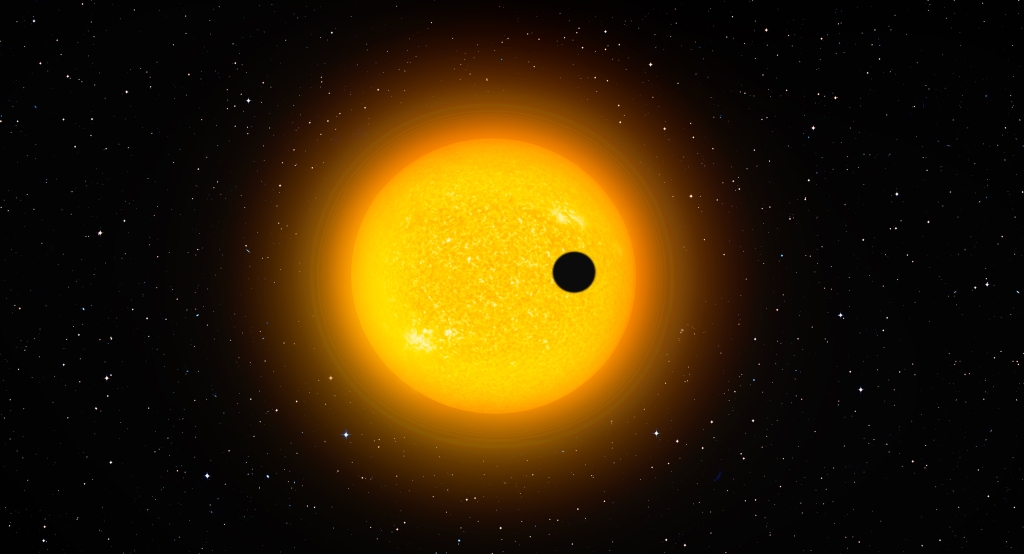

Exoplanets Are Very Strange
Many of the exoplanets are very strange. Gliese 581 is about 20 light-years away from Earth and is very similar to earth, but it doesn’t rotate. The orbit of WASP-17b is the opposite of the rotation of its star (unlike our planets, and most exoplanets). Its radius is 1.9 times larger than Jupiter’s radius. In other words, its volume is 6.86 times larger than Jupiter’s and yet its mass is only half the mass of Jupiter making it a big light puff ball. Like giant cotton candy.
Gliese 436b, this planet has a core made up of ice (yes ice formed from water) that is as hot as fire. TrES-2b or Kepler-1b reflects less than 1% of the light it receives. It is darker than coal. 55 Cancri-e is believed to have an interior of diamond. In addition, the side facing its star/sun is extremely hot (1,700°C or 3,100°F).
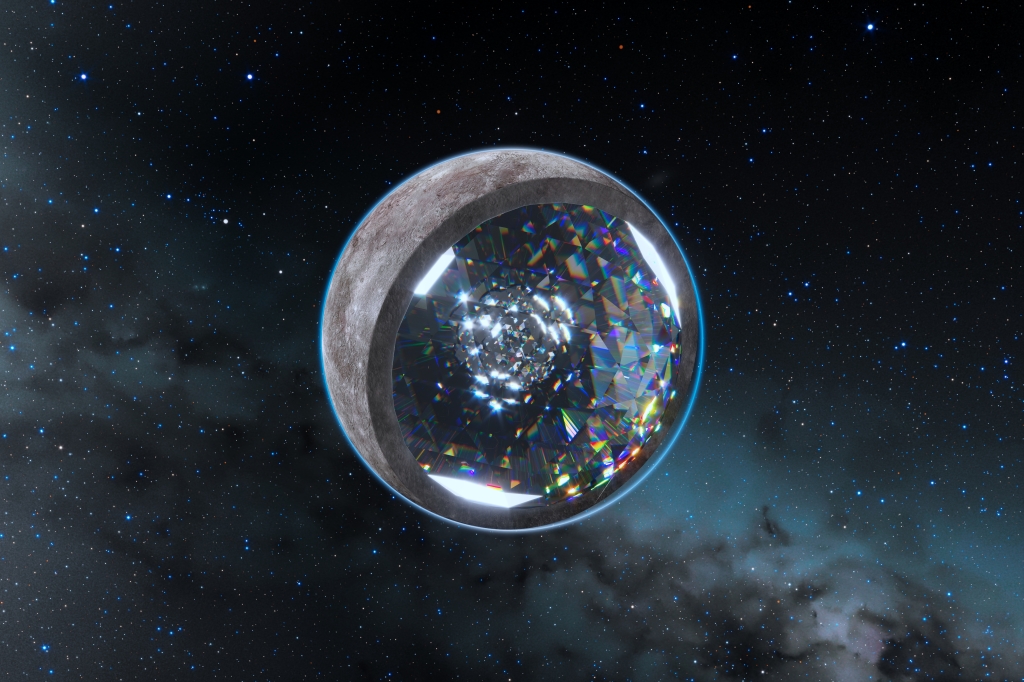
Then we also have J1407b, an exoplanet six times as massive as Jupiter and 20 times as massive as Saturn but with a ring system that outshines that of Saturn by far. J1407b is often referred to as Super Saturn.
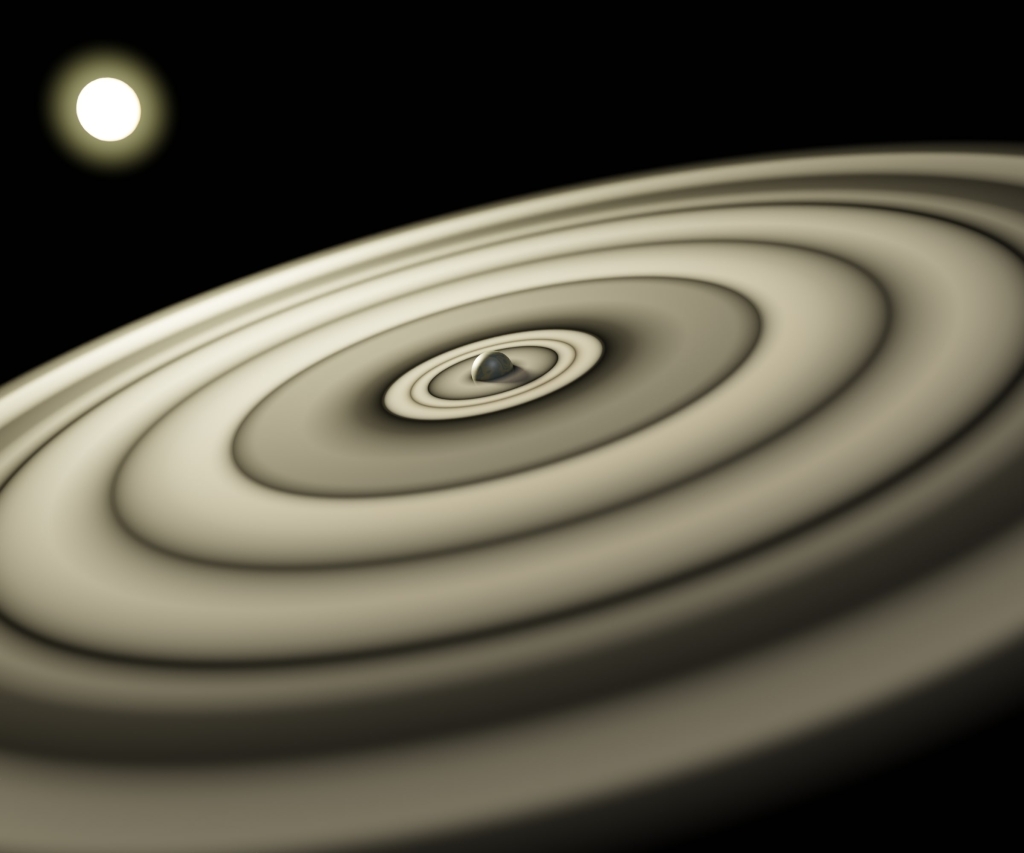
Determining what materials exoplanets consist of is very difficult but NASA believe they’ve found water planets. Check out this video from NASA and the illustration below.
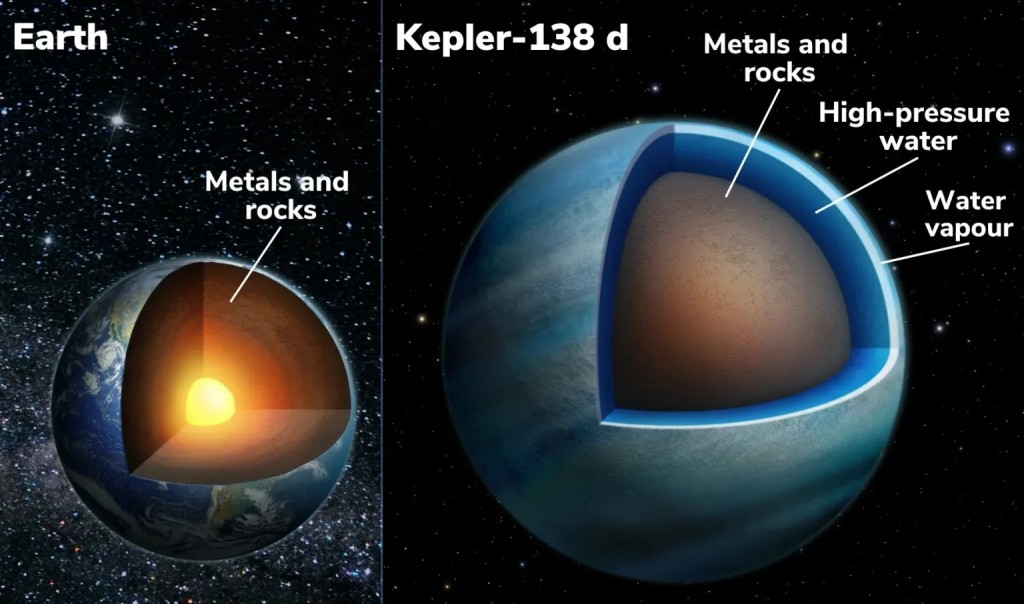
NASA also believe they have found water vapor in a small exoplanet’s atmosphere, GJ 9827d. Check out the video below.
Below is an imagined exoplanet with mushroom like life
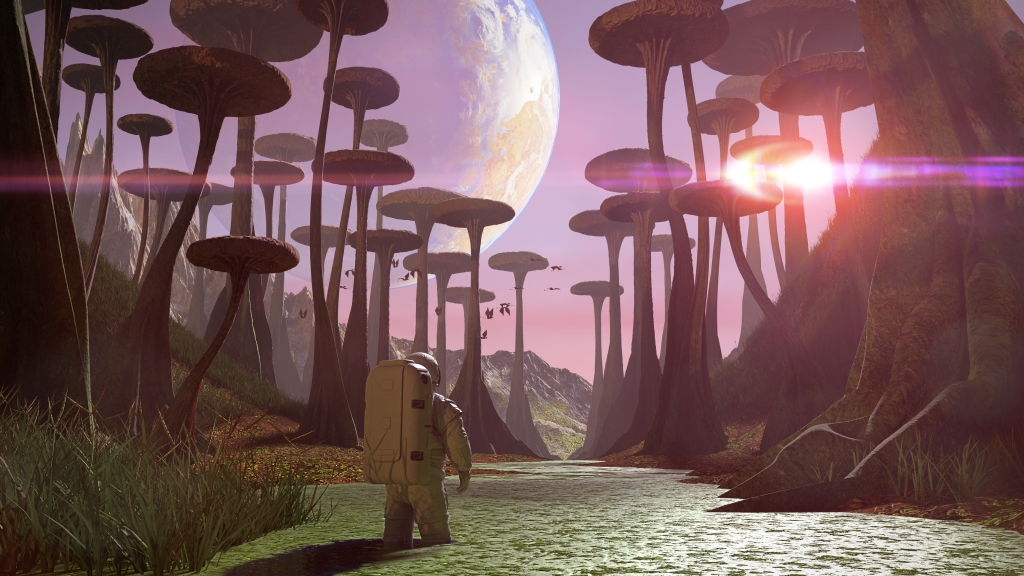
So, it is estimated that there are 11 billion potentially habitable Earth-sized planets orbiting stars roughly the same size as the sun in the Milky Way. It is estimated that there are an additional 40 billion potentially habitable Earth-sized planets orbiting red dwarf stars in the Milky Way.
The NEID Spectrometer
As you can see in the comment section below, a fellow blogger and on-line friend David Lee Summers mentioned that looking at exoplanets is his “day” job! He spent the last three nights helping to take spectra of exoplanet systems with the WIYN telescope at Kitt Peak. They work with the NASA-funded NEID spectrometer.
A spectrometer is a scientific instrument that measures the distribution of light wavelengths, or the spectral components of a physical phenomenon It is amazing what you can find out from star light, the weight of exoplanets, the size of stars, the elements and substances in stars and planets. Below is the extreme-precision radial-velocity spectrograph mounted on the WIYN 3.5-meter Telescope at Kitt Peak National Observatory. That is the instrument David works with.
David wrote a blog post about his work which I will re-blog in the near future.
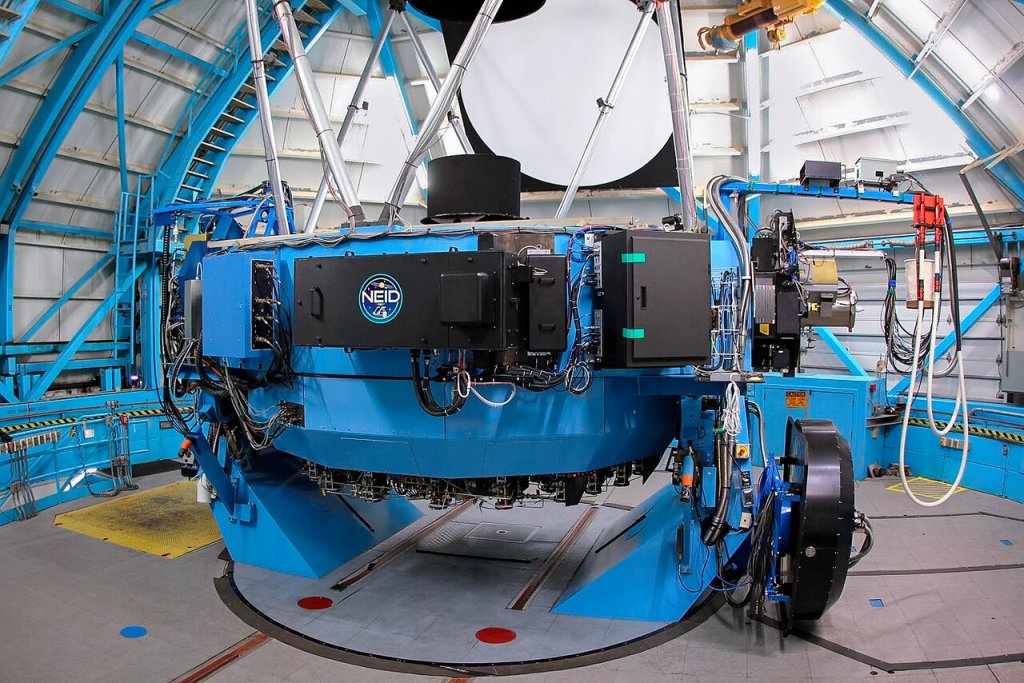
Thank you so much David.
Do you believe there’s intelligent life on any of them? If you do, why haven’t we heard from them?


Mind blowing, Thomas! I love to physically (not only spiritually) expand my horizons. It helps me reflect on the greatness of Existence and beyond. Thank you for adding to my “horizons”. LIght and blessings to you*
LikeLiked by 1 person
I find these things fascinating too. Thank you so much Susana and light and blessings to you too.
LikeLiked by 1 person
Fascinating!!!
LikeLiked by 1 person
Yes I think so too. Thank you Luisa.
LikeLiked by 1 person
You’re more than welcome , Thomas 🙏
LikeLiked by 1 person
An interesting post, Thomas.
LikeLiked by 1 person
Thank you so much Robbie
LikeLike
😊
LikeLiked by 1 person
Great post. Of course, looking at exoplanets is my “day” job! I spent the last three nights helping to take spectra of exoplanet systems with the WIYN telescope at Kitt Peak. We work with the NASA-funded NEID spectrometer. You can learn a little more about it here: https://noirlab.edu/public/programs/kitt-peak-national-observatory/wiyn-35m-telescope/neid/
LikeLiked by 1 person
Wow “I spent the last three nights helping to take spectra of exoplanet systems with the WIYN telescope at Kitt Peak.” I was wondering about it but I did not know if you did any such work. That is certainly very cool. You have a very exciting job. Do you mind if I add your link to my post and say something about it?
LikeLiked by 1 person
Thank you! The link I shared is from the public page about NEID, so by all means, please feel free to add it. You may also enjoy this blog post I wrote a few years ago, which tells about our first light on the spectrograph and explains a bit about how it works: https://davidleesummers.wordpress.com/2020/01/18/weighing-planets/
LikeLike
Thank you so much David. Yes I certainly would like to reblog this link. It is very interesting.
LikeLiked by 1 person
Thank you. As it turns out, the laser frequency comb which is our calibration “road map” I mentioned in the post was a Nobel Prize-winning technology, but we need super high precision to do this kind of work.
LikeLiked by 1 person
That is very interesting and I certainly would like to know more about that. Thank you so much David.
LikeLiked by 1 person
You’re welcome. There’s a good write up about the technology on the Wikipedia page article titled “Frequency Comb.”
LikeLiked by 1 person
Thank you David I will check that out
LikeLiked by 1 person
Our Solar System is one of those facts that is mind boggling to take in.. 🙂 And I am sure in the future those facts will also be added to, as we explore and understand more of our Universe.. .
Thank you Thomas..
LikeLiked by 2 people
Yes you are right. Our solar system is quite amazing and unique. What if our solar system is the only solar system in the Galaxy with intelligent life? We haven’t heard from anyone else yet. Thank you Sue.
LikeLiked by 1 person
Well, there I do have to differ…. But that is a whole other subject of ET’s 🙂 and intelligent life…. I feel within the next few years, there may well be some new Facts emerging on our Star brethren.. 🙂 We many not have officially been told of their existence.. But I do believe there are those top ranking officials who Do Know!.. 🙂
And I feel once we have disclosure, then we may have to unlearn a lot of given facts we have been taught are true.. But that is just my opinion… 🙂
Thanks Again Thomas… I do enjoy your posts.. 🙂 As it stretches one’s mind.. 🙂
LikeLiked by 1 person
Yes you have a good point. I don’t know anything about possible aliens so I was just thinking out loud. In any case we agree that our solar system is unique and special. Thank you so much for adding your interesting thoughts.
LikeLiked by 1 person
🙂 Maybe we will all soon hear of some new flying UFOs… I just saw some footage of some strange anomalies in our skies, which were definitely not planes 🙂 … ❤
LikeLiked by 1 person
That is interesting. Let’s see what happens.
LikeLiked by 1 person
Indeed.. Keeping an open mind on all things are possible. 🙂
LikeLiked by 1 person
Yes I will
LikeLiked by 1 person
Interesting post🌅🌅
LikeLiked by 1 person
Thank you Satyam
LikeLike
You must be aware of hycean planets, aren’t you?
LikeLiked by 1 person
I’ve heard of these hypothetical planets. I think exo-planets is a fascinating subject, but I am not an expert on exo-planets and I have not paid much attention to hycean planets.
LikeLike
Mind blowing article Thomas 🌅🌅
LikeLiked by 1 person
Thank you for your kind words Satyam
LikeLike
Wonderful article 🌅🌅
LikeLiked by 1 person
Thank you so much Satyam
LikeLike
Mind blowing post Thomas 🌅🌅
LikeLiked by 1 person
Thank you so much Satyam
LikeLike
Wonderful post 🌅🌅
LikeLiked by 1 person
Thank you so much Satyam
LikeLike
Wonderful post 🎸🎸
LikeLiked by 1 person
Thank you so much Satyam
LikeLike